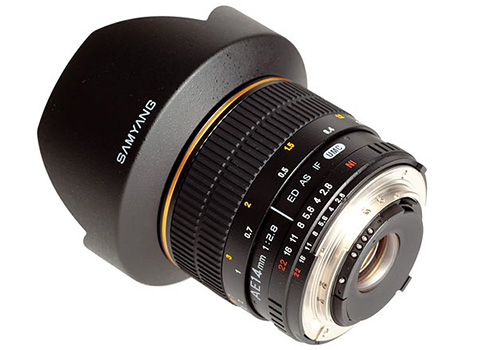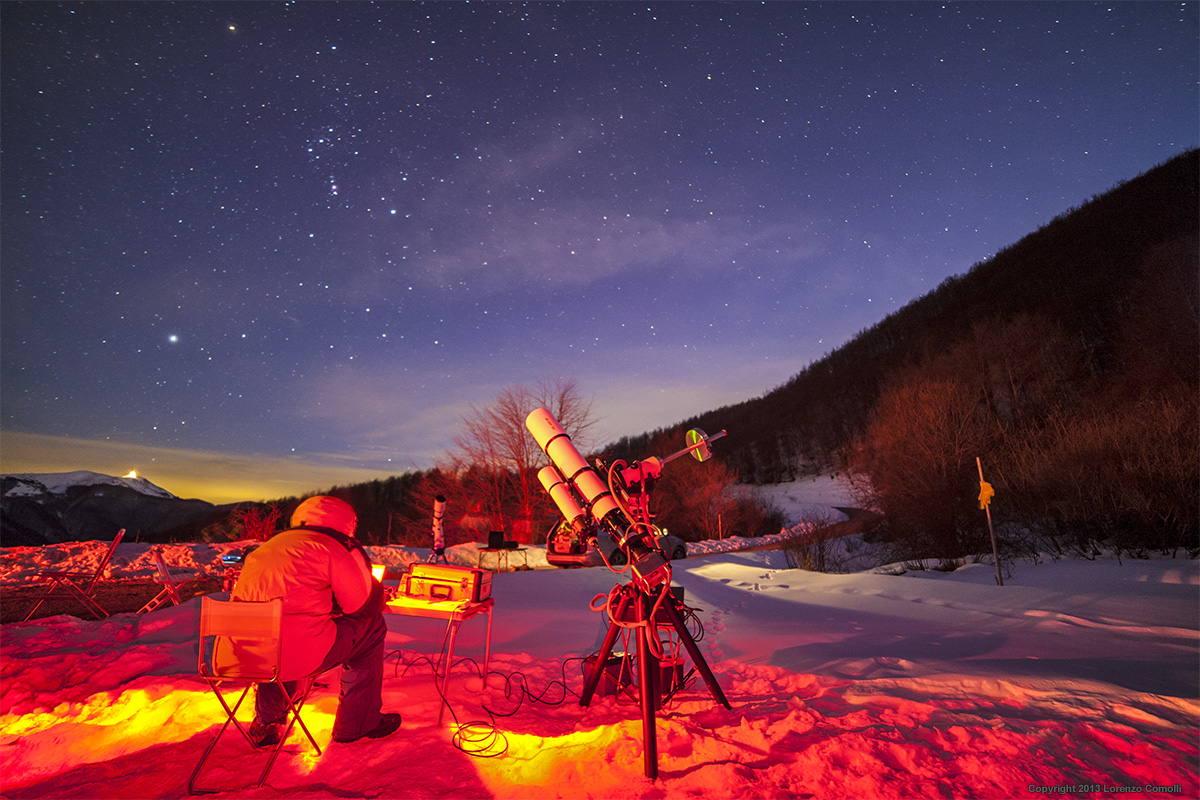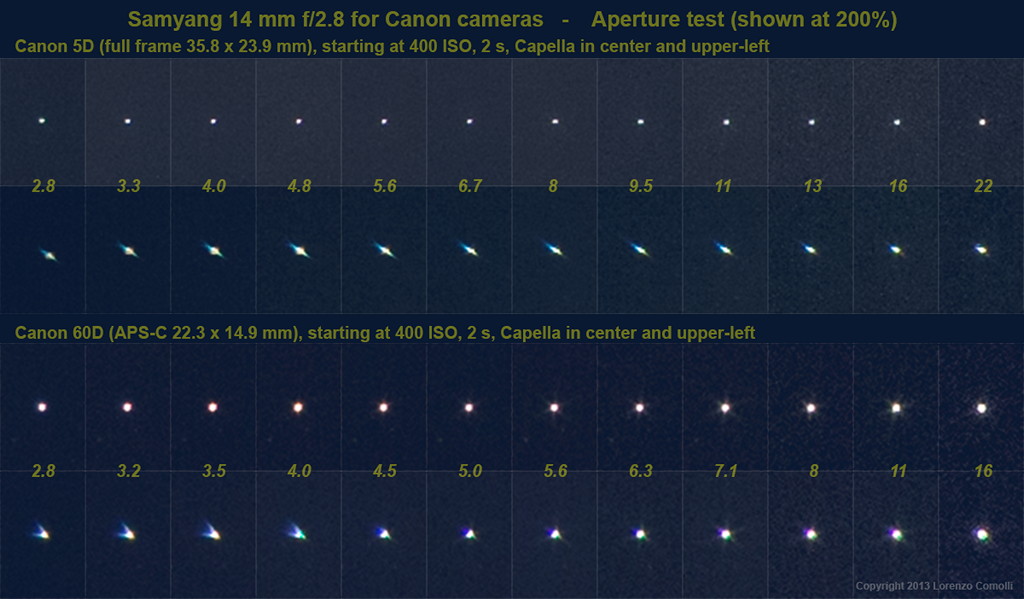|
|

- price: at about 340€ (March 2013), it is *much* cheaper respect to the similar Canon EF 14mm f/2.8 L (1800 €) and Zeiss Distagon T* 15mm f/2.8 (2500€).
- field coverage: it is able to cover the full-frame (24x36 mm), but also works with APS-C cameras
- aperture: at f/2.8 it is the same as the best wide lenses cited above, and very interesting for night-time usage
- manual focus: in astrophotography there is no need for auto-focus, and so not to pay for it is a plus, imho
- image quality: even if the price is much much lower respect to the Canon 14 mm lens, the image quality is not too bad as the price would suggest
I've purchased this lens from Giordano Innovations ( http://www.giordanoin.com/ ). I've found the owner is an astrophotographer and also a great seller, very supportive for any question.
I've tested the lens under the stars to evidence for any small optical distortion, especially at the corners. Find below the aperture and focus tests.
Moreover I've used the lens for some timelapses, here is the first. And you can find below a single frame from a timelapse sequence.
Test results. I'm surprised by the image quality such a cheap lens is able to provide, even for a very demanding task such as astrophotography with a full frame camera. In truth I would expect a much worser result for the corner optical distortions. When viewed at Full HD resolution (1920 pix wide), the optical distortions on the peripheral stars are nearly invisible. Much better respect to lenses such as the tested Sigma 20 mm f/1.8. I've tested also during the day with a Canon 60D and I've found a very good anti-reflection coating, as the image at bottom shows. Imho, this is a must have lens!
List of tests:
- aperture test, from f/2.8
to f/16 at 1/2 stops and then to f/22. Shown the center and upper-left behavior on Capella star.
Exposures
and ISO were selected to maintain a constant nominal exposure. Tested both on Canon 5D (full frame) and Canon 60D (APS-C). Watch high res version for the images at 200% enlargement.
- focus test. I've moved the focus ring from above the infinity line (-10 mm position) to about the "3 m" inscription (at +10 mm position). The focus ring movement is very good and the position of best focus is easily reachable. Watch high res version for the images at 200% enlargement.

Click for full-res

My telescope pointing Orion while imaging Sh2-265 nebula with TEC 140. Pian dell'Armà, Italy, 8 Feb 2013.
Canon 5D, Samyang 14mm f/2.8, 30 s, f/2.8, ISO 1600.

Snowed path. Canon 60D, Samyang 14mm f/2.8, 1/400 s, f/11, ISO 100.
